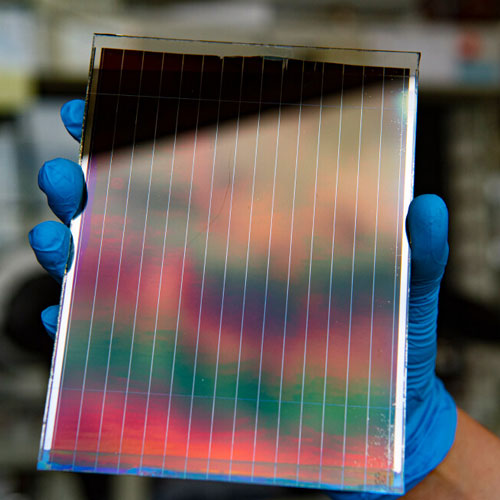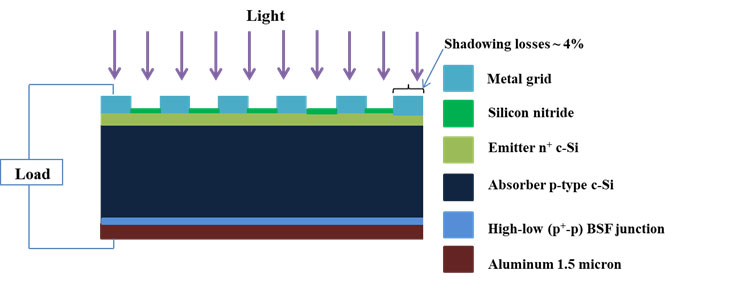
Silicon based solar cells, particularly c-Si p-n junction cells dominate the current market. Conventional methods increase the production cost. An alternative method is required to minimize the cost of production. Highly efficient cells with a low-cost production method are required.

When a p-n junction is formed, a built-in electric field exist across the p-n junction (i.e., across the depletion region) due to negatively charged acceptor ions in the p-side and positively charged donor ions in the n-side (refer perovskite solar cells in the technology menu).


Schematic diagram of charge collection and continuing process as long as the illumination is on.
After charge collection, electrons from emitter flow through the load and reach rear side of c-Si and recombine. If light is continuously on, electron-hole pairs are generated, charges are collected at their respective electrodes, and electrons flow through the load, then recombine with absorber as shown in the above schematic diagram and process will continue.

Fabrication of c-Si solar cells using boric acid as spin-on dopant for back surface field
R. Soc. Chem. Adv. 4 (2014) 4225-4229.
Renewable Energy, 80 (2015) 80-84.
RSC Advances, 6 (2016) 70040-70045.
Current Applied Physics, 18 (2018) 107-113.
Trans. Electr. Electron. Mater. 16 (2015) 227-233.
Prog. Mat. Sci. 82 (2016) 294-404.
At GVN SolarPower, for energy applications, we are dedicated to developing efficient and affordable solar cell technologies through research and development.
132 92 Ave, Skye Pl.
Surrey V3V 6T6
Vancouver BC, Canada
+1 604 203 2409
jkr@gvnsolarpower.com
careers@gvnsolarpower.com
While contacting us by email, please send a Cc to gvnsolarpower@gmail.com
Copyrights © 2023 GVN SolarPower Inc. Developed & Hosted by YOGA’S IT Solutions.